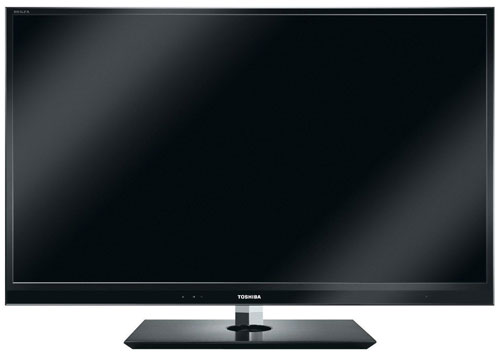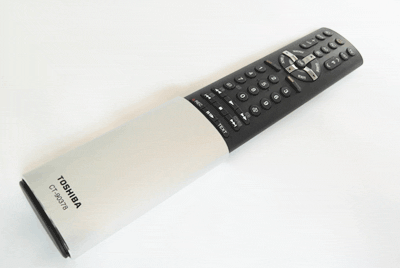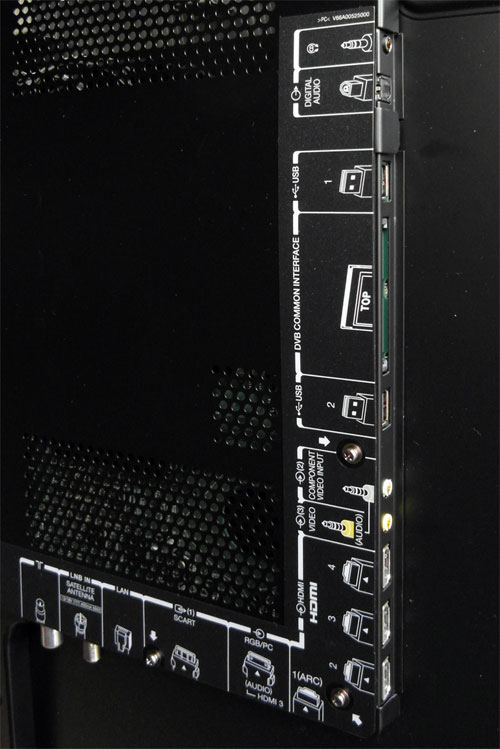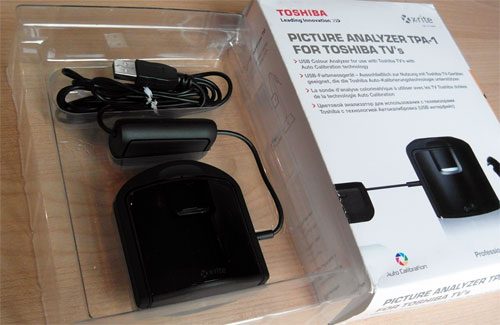The Regza WL863 series is the current range-topper in Toshiba’s 2011 lineup of HDTV models in the United Kingdom, owing to the company’s decision not to release the mouthwateringly-specced 55ZL1 which features 512-zone local-dimming LED backlight technology on these shores. Nevertheless, the Toshiba 46WL863 which we’re reviewing today is no slouch itself, boasting edge-mounted LEDs, 3D capabilities, and the firm’s “Toshiba Places” internet-connected portal. We also can’t wait to evaluate the onboard CEVO video processing engine that is derived from the CELL microprocessor used to power the Sony PS3. Let’s get stuck in, shall we?
<!-- google_ad_client = 'pub-2887677957235196'; google_ad_slot = '4990177225'; google_ad_width = 336; google_ad_height = 280; //-->
Disclaimer: The specific model we tested was the Toshiba 46WL863B, which is the 3-pin-plug British version. Throughout this article the terms Toshiba 46WL863 and 46WL863B are used interchangeably to refer to the same LED TV. While we did not review the smaller 42-inch 42WL863B nor the larger 55-inch 55WL863B, there should not be any significant difference in picture performance (bar 3D viewing immersiveness as a result of differing screen sizes) given similar specifications.
From the moment we took the panel out of the shipping box to be assembled on the included pedestal stand, we couldn’t help but be impressed by the Toshiba 46WL863B’s minimalistically clean lines and many other design elements which simply oozed quality. The semi-reflective LCD screen is framed by a slim, matte grey bezel, the bottom border of which widens to accommodate a Toshiba logo at the centre, as well as a few classy LED indicators and touch-sensitive control buttons on the right.

Despite the slender profile made possible by edge LED backlighting, the television set feels wonderfully solid – there’s certainly no hint of creaky plastics nor loose screws here. Borrowing some stylistic cues from Danish design powerhouse Jacob Jensen, the table-top stand sports a circular punched-out hole located at the base of the silver pedestal stem, whose front is moulded in the shape of a triangular prism.

The Danish design group’s aesthetic influence does not stop there… it extends to the remote control too. A cover with brushed metallic effect is found near the middle of the remote, which is slidable into one of three positions to hide or unhide some of the buttons. Although it adds some reassuring heft, the metal cover unfortunately makes the clicker somewhat unwieldy to hold in the hand, especially when slided to its bottom-most position (which is necessary to access the all-important [3D] button, without which 3D mode cannot be activated on the Toshiba 46WL863).
To keep the chassis strikingly slim, breakout adaptors (supplied with the TV) are used for SCART, component and even VGA connections.
 |
| Rear: 4 x HDMI, VGA, component, SCART, aerial, satellite, LAN, 2 x USB, & CI slot |
For the purpose of this review, Toshiba sent us a TPA-1 (Toshiba Picture Analyzer 1) light meter to be used in conjunction with the auto-calibration function on the 46WL863B. It is essentially a rebadged X-rite iDisplay Pro, a colorimeter which is capable of extremely fast readings, and requires no dark calibration, two attributes that we think will appeal tremendously particularly to the uninitiated.

For one specific reason that we will reveal in the next section, auto-calibration can only be carried out in the WL863’s [Hollywood Pro] picture mode. By hooking up the Toshiba TPA-1 to the TV’s USB input 1, and then accessing the appropriate submenus among the picture settings, users can choose to either calibrate colour or greyscale/gamma on the WL863. A sequence of internal test patterns will be displayed on screen, which will then be measured by the meter, and the readings fed back to the TV for the necessary adjustments to be made. The whole process is extremely fast and painless – auto-calibration of both colour and greyscale/gamma took less than five minutes on our 46WL863 sample – but are the results satisfactory? Read on to find out.
| Jump To: 1. DesignNext: Calibration3. Performance |
jQuery(document).ready(function($) { var toc = $("#tableofcontents").html(); $("#tablecontents").html(toc); });